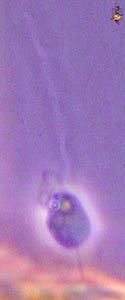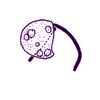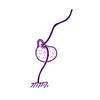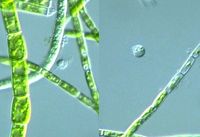Bicosoecids
A Microbial Biorealm page on the Bicosoecids


Classification
Higher order taxa:
Eukaryota; stramenopiles
Species:
Cafeteria roenbergensis, Psuedobodo tremulans
Description and Significance
Bicosoecida is an order of unicellular marine flagellates that have for the most part been poorly studied. Some bicosoecid genera have been identified for decades, while some, especially the genera Cafeteria, have only been recently discovered. Cafeteria roenbergensis, whose name comes from their voracious and undiscriminate appetites, are very common in marine habitats. Another species is Pseudobodo tremulans, also a marine flagellate found mainly in sediments. Bicosoecids consume bacteria in the oceanic environment and may have a direct effect on deep-sea marine fluxes of nutrients. While more research is being done on these organisms, much remains unknown about bicosoecids and other deep-water nanoflagellates.
Genome Structure
For NCBI's information on Bicosoecida's genetics, click here.
Cell Structure and Metabolism


Cells of Cafeteria roenbergensis are D-shaped, 2-5 microns long, with two flagella emerging near the apex, or tip of cell. In non-swimming cells, the posterior flagellum passes over one face of the cell and attaches to the substrate. In swimming cells, the anterior flagellum is directed forwards and beats to propel the cell in a spiral-like motion, while the posterior flagellum trails behind. The cells have one nucleus and five mitochondria, and like other stramenpiles the cristae is tubular. There is a shallow groove on the left side of the cell, through which bacteria may be ingested anteriorly or posteriorly. Pseudobodo tremulans's cells are slightly larger, 4.5-6 microns long, with an anterior "collar" or lip-like structure around the anterior end of the cell. There are two flagella which behave much like that of Cafeteria roenbergensis. Bicosoecid cells are heterotrophic, and reproduce only through asexual binary division; no other reproductive method has been found.
Ecology

Bicosoecids are found in marine environments. Cafeteria roenbergensis is found anywhere in the water column, while pseudobodo tremulans has been located in the sediment as well. Bicosoecids are bacteriovores, and apparently play a key role in marine flux regulation. Because studies of deep-sea nanoflagellates are relatively recent, more information is currently being gathered in terms of the bicosoecids' effect on the marine environment.
References
Cafeteria Index. Evolutionary and Integrative Genomics at the Universitè de Montrèal.
Introduction to the Sagenista. Museum of Paleontology, UC-Berkeley.
Pseudobodo tremulans. Dept. of Marine Ecology, Marine Botany, Göteberg University.
